Port Townsend, Wa, 18-May-2019 – Call me Almost Captain. I’ve passed all the tests, taken a Red Cross-approved first aid course, had a physical. There is only getting a TWIC card (background security check), getting a drug test and assembling 720 days of sea time, and then, with the addition of another few hundred dollars I will have a 25-ton master’s license for near coastal. Oh yeah, I also will have sailing, and assistance-towing endorsements.
This will allow me to captain, for money, power vessels up to 25 tons gross vessel weight based on volume (not displacement); the vessels will weigh, empty, much less than 25 tons. I can also master a sailing vessel of unlimited weight and get paid for towing boats that need assistance. In the US, it seems I can do all of this on non-commercial vessels, for no pay, without any license. (In other parts of the world this isn’t true: one must actually have training before doing these things.)
Each of the previous three years we have been sailing north to Alaska by now. And in the summers previous to those we were somewhere else, Atlanta, Phoenix or Long Island. This is our first summer in Jennifer’s Port Townsend house. She is thrilled. While I work on Caro Babbo on Lake Union or go to school, Jennifer has been gardening, which really seems to mean weeding.
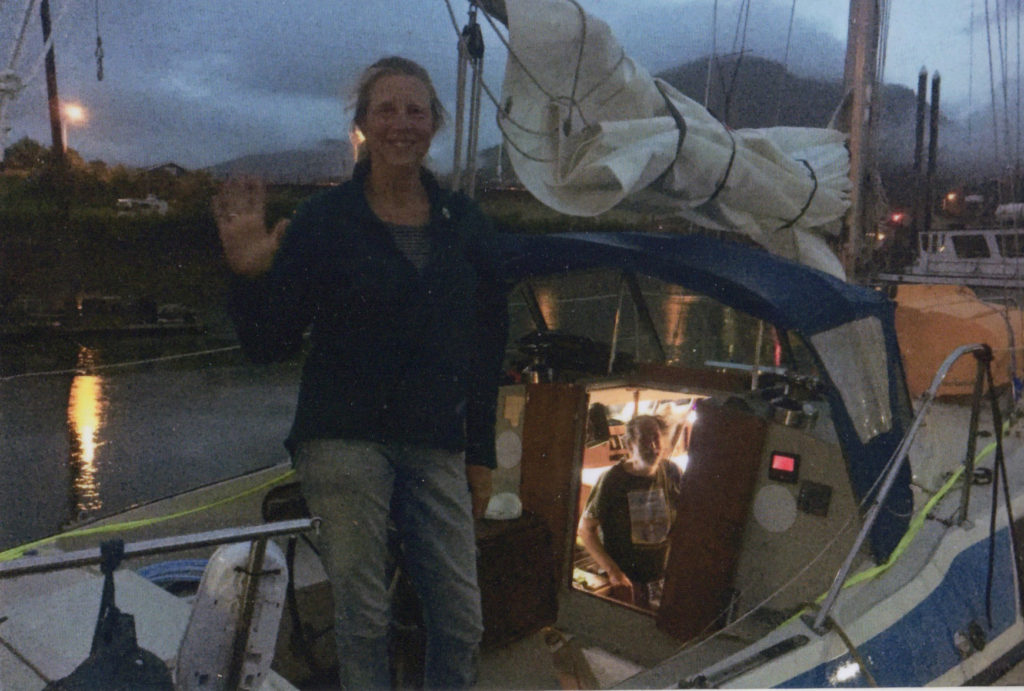
We worked today in the garden, but then when we went to run some errands we found our path blocked by the annual Rhody, as in Rhododendron, parade. It was great. And what small town life should be with marching bands from schools all over the peninsula. There were special interest groups of all sorts, many of which had queens and princesses, but few kings and no princes.
There were car collectors galore and the occasional politician and political party.
Like all small town parades, I got to run into the parade to kiss a friend marching. It was Christian Gruye who told us that her spouse, the internationally known rigger, Brion Toss is quite ill: info that is never welcome. Write to Brion, if you know him, tell him that we all care.
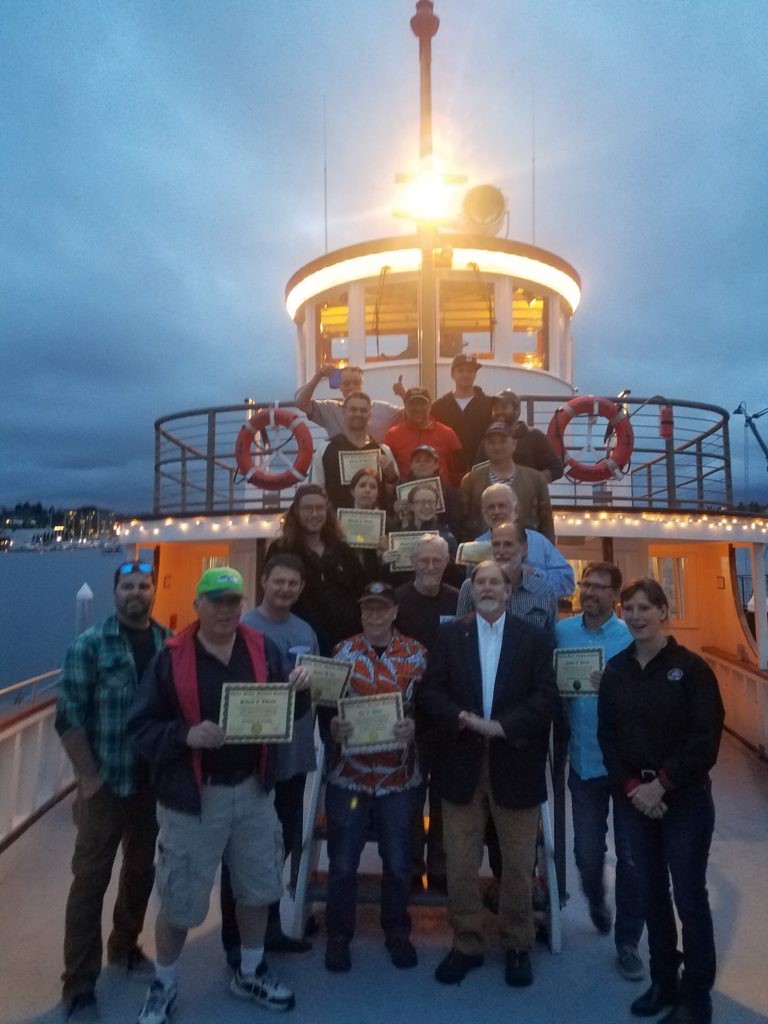
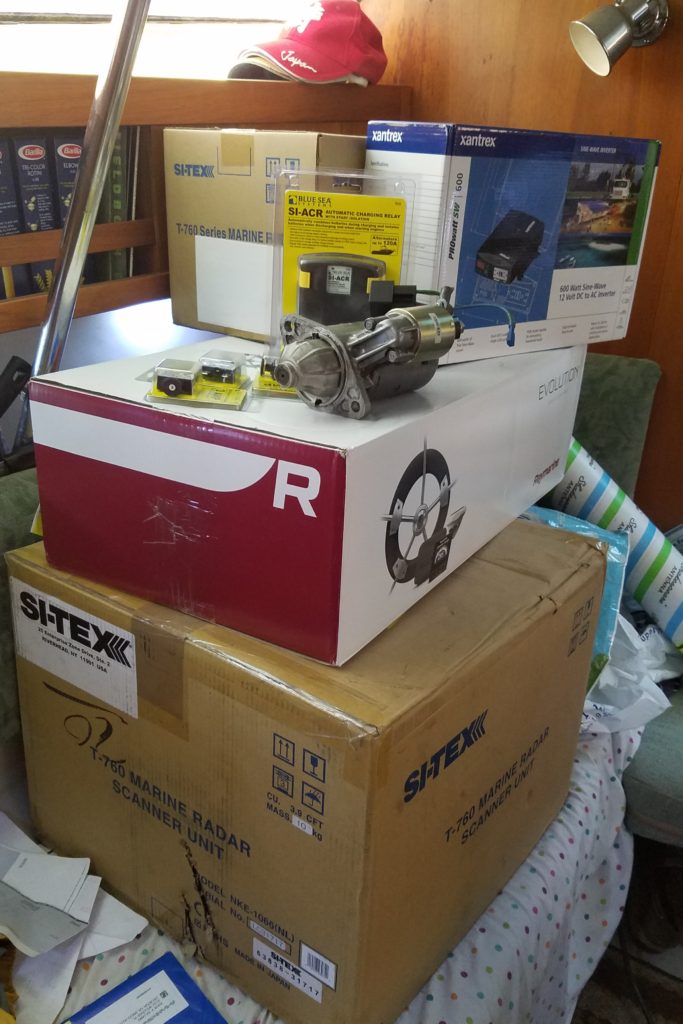
Aside from passing my exams and attending a wonderful graduation party on the Virginia V, I spent Wednesday and Thursday installing the repaired starter, finishing the new circuit breaker box and installing a charging relay between the alternator and the two battery banks.
On the circuit breaker project, I upgraded the main wiring from the batteries from 12 AWG (pronounced gauge 😉 ) to 8 AWG and installed a 40-amp circuit breaker. Erwin and I noticed that the fuse and wiring from the batteries to the fuse panels were quite warm to the touch – not a good thing.
The wiring is continuing to look tidier and more professional every day. The previous owner of Caro Babbo was a commercial electrician who took knowledgeable short cuts everywhere: An electrically-competent boat, but a rat’s nest of wires.
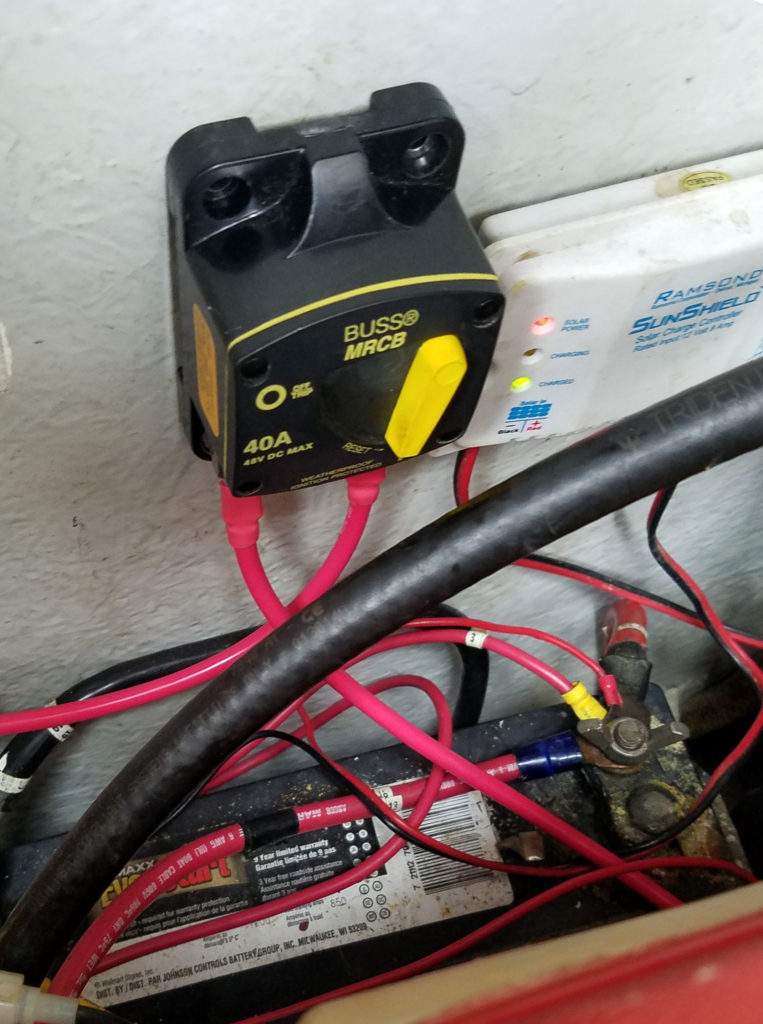
The charging relay is more interesting. Boats older than mine generally have an A/B switch to choose which battery bank is used to start the engine and also which battery bank is being charged by the alternator. The switch has three positions, A, B, and A+B.
To charge both batteries at the same time the switch is placed in the A+B position. The danger is that one bank may go bad and drain the other, or that in normal usage the switch position may be left in the A+B position and both banks will drain to the point that the engine can not be started.
Boats of my vintage used a splitter that consists of two diodes, which means that power can flow from the alternator to the batteries but not between the battery banks. On Caro Babbo, one bank is dedicated to starting the engine, the other to running everything else.
Nothing is free. The splitter lowers the output voltage by one volt, meaning the batteries are never fully charged.
A charging relay is not as smart as I had hoped, but gets rid of the one volt drop.
When using the relay a ‘‘main’’ battery bank is always charged by the alternator. When that battery bank has sufficient charge, the second bank is charged. The second bank is not allowed to be connected with the first in a number of situations thereby making the normal ways of discharging both banks more difficult.
The sales materials for these devices make it sound as if no matter which battery has a problem the other will be charged, but the device has only two connectors so one bank is the primary because only the second battery bank can be removed from the charge string.

If the voltage is high enough on the main battery bank, the second is added to the charging string. As I write this, I realize that when the solar panels are active this device will combine the battery banks, which can confuse the solar charging controllers. A switch to disable the relay can cure this on long sails.
We missed the Seattle boat show this year while we were in Atlanta, so on Thursday we made the journey to Anacortes for their boat show. We also visited my friend Rebecca Pratt who grew up in the area and remembers it as a rough, blue collar town inhabited by marine-industry workers. There are still boat yards and large vessels are still built there (A 90-foot racing sail boat built in Anacortes is currently in the Boat Haven yard in Port Townsend.)
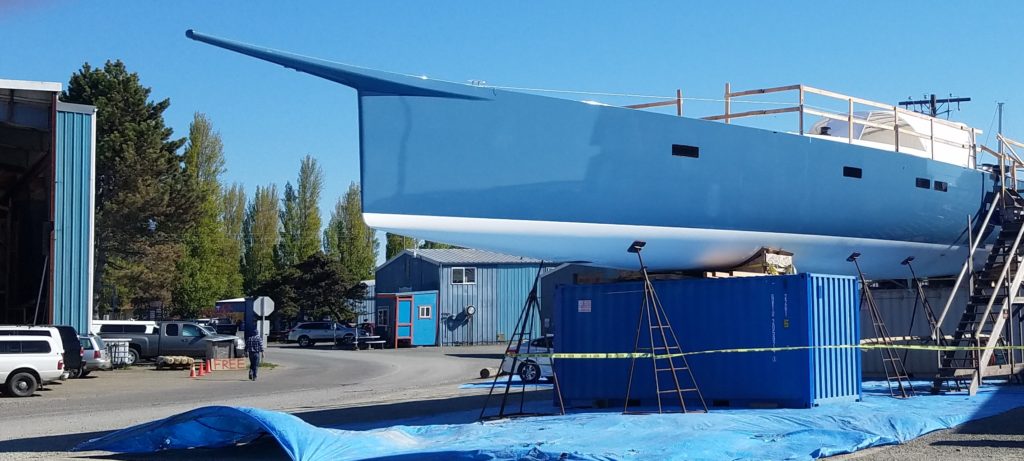
Today, Anacortes is another genteel town experiencing a rebirth through retirees and Seattle money looking for a place to go.
The boat show was worth it for two things: learning about a pneumatic lift for hinged hatch covers*, which we saw on a million-dollar Tayana, and for learning about offshore insurance.
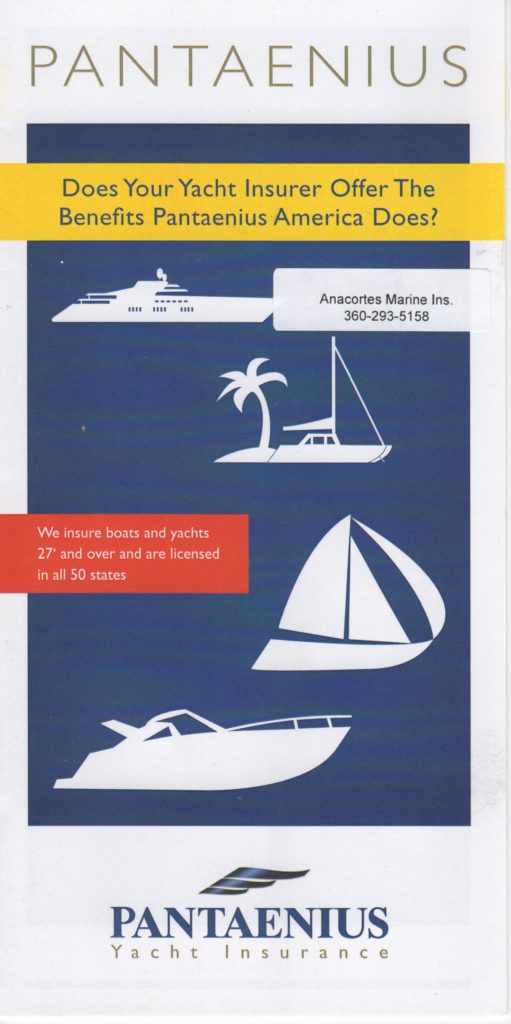
Insurance for going offshore has been a problem exacerbated by insurance sales people who are pushing their solutions, which can be inappropriate – I assume that given these agents sell marine insurance they know about the full spectrum of insurance available.
There are two components to boat insurance, just like car insurance: Hull insurance (think collision) and liability. Caro Babbo is too old and worth too little for anyone to sell us hull insurance, generally.† But, it’s not about hull insurance. It’s about liability insurance in terms of spills or even rescue (and damage we might do to other people’s property). Insurance isn’t to protect the other party, it is to protect one’s own assets.
One approach is to get a PUP (Personal Umbrella Policy), which will cover us no matter what occasion causes us to be liable – marine or otherwise. The second is to find some insurance that specializes in offshore sailors. Pantaenius is a company that does. I had forgotten that I see their ads in the British pub, Yachting Monthly. An agent we met at the boat show suggested them. (The agent also turns out to be Rebecca’s agent so we feel a bit safer.)
August is coming upon us with lots still to do. I’m away from Caro Babbo this week spending the time at the PT house with the very harsh task mistress Jennifer, who seems to be a strong adherent to the weak minds strong backs philosophy. I will be doing much digging and carrying.
*The hatch lid in the cockpit keeps bonking me on the back of the head. This will fix that, I hope.
† Boat US, which resells GEICO, routinely sells us hull insurance. Caro Babbo is valued at $17,000.

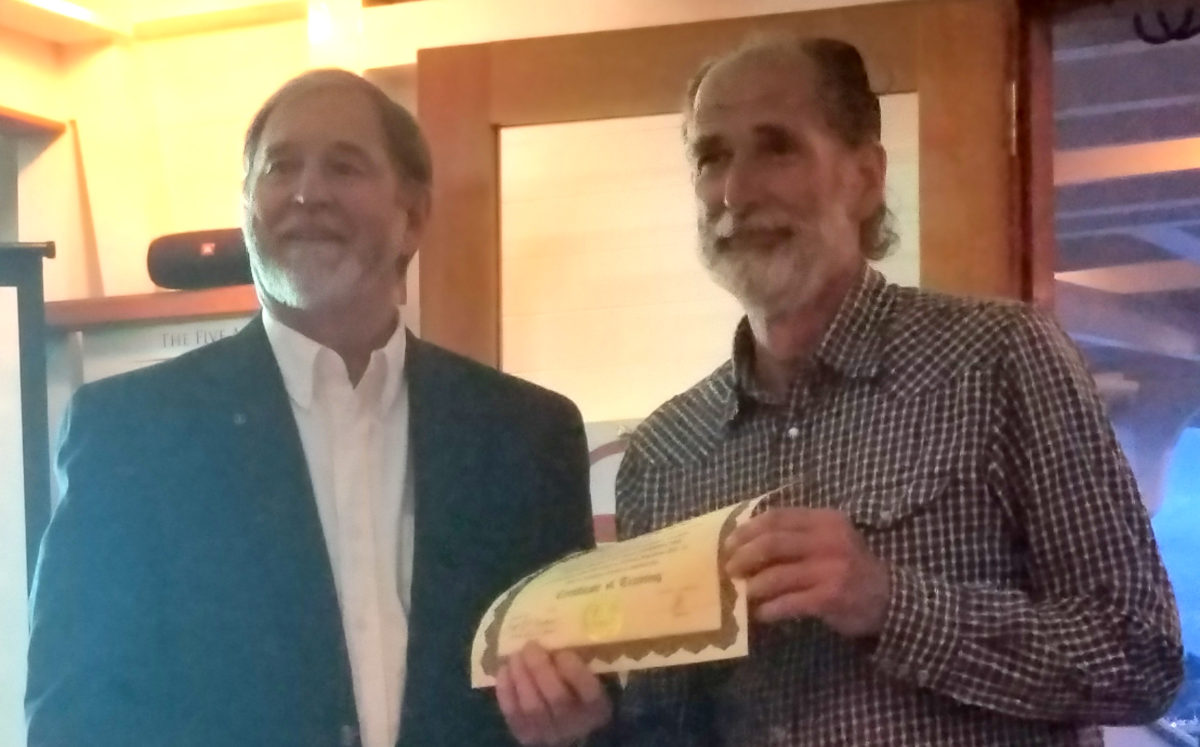
Congratulations on your mastership (or is it shipsmaster?) papers.
https://www.youtube.com/watch?v=lixoQEE6oek
Thanks, Duncan.
I think it is ship’s master.
Eventually I will get the paperwork and see what it says.
Congratulations my friend. May your adventures on the water always be a positive experience.
Thank you, Don.
Congratulations on your (almost) Captainship John!
I spotted this article in an AARP newletter (yes, I get them, and sometimes even read them). Thought you might enjoy it. https://bit.ly/2QlZex3
Love reading your Carobabbo blogs!
Cheers,
John